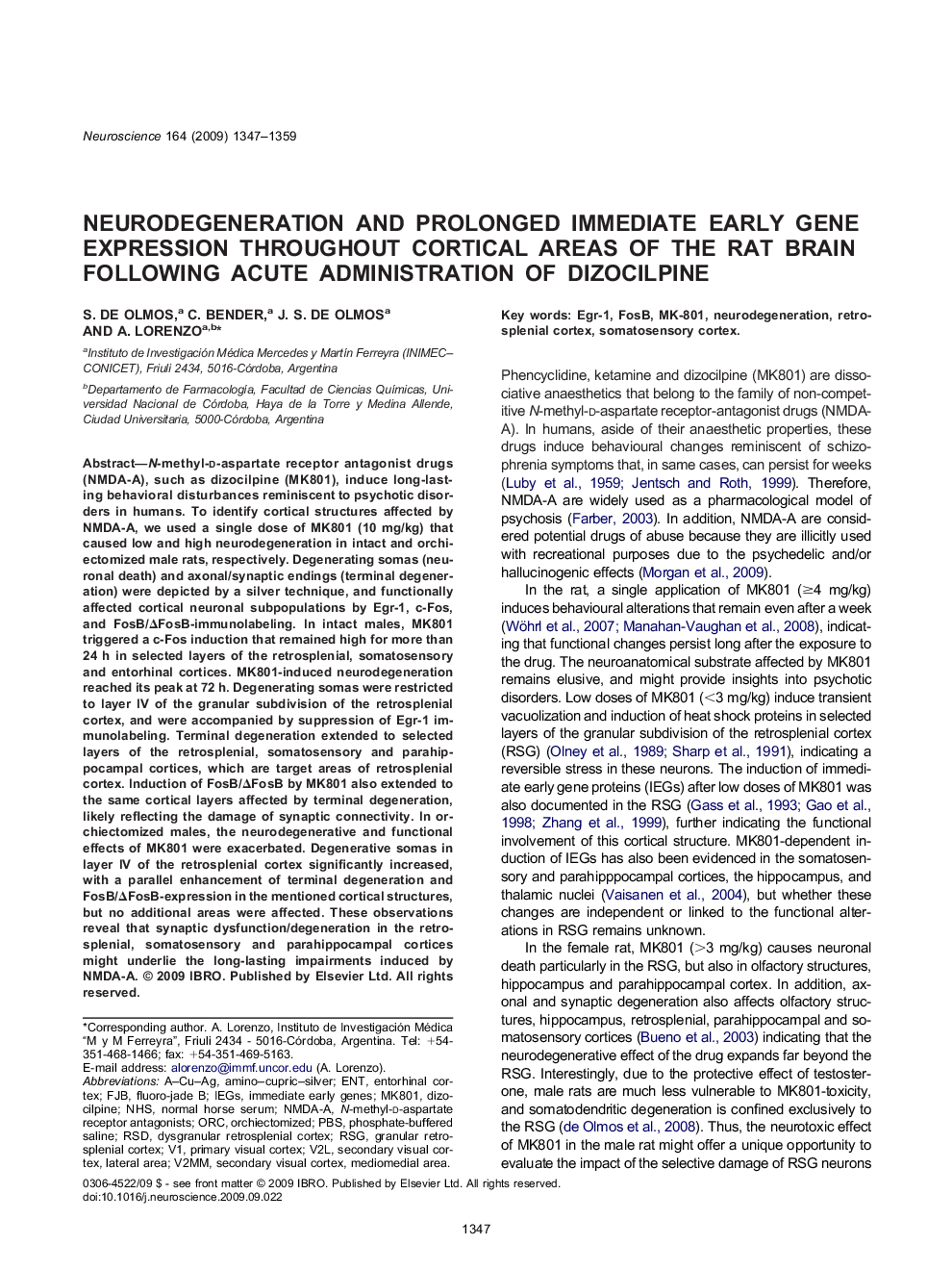| Article ID | Journal | Published Year | Pages | File Type |
|---|---|---|---|---|
| 6277543 | Neuroscience | 2009 | 13 Pages |
Abstract
N-methyl-d-aspartate receptor antagonist drugs (NMDA-A), such as dizocilpine (MK801), induce long-lasting behavioral disturbances reminiscent to psychotic disorders in humans. To identify cortical structures affected by NMDA-A, we used a single dose of MK801 (10 mg/kg) that caused low and high neurodegeneration in intact and orchiectomized male rats, respectively. Degenerating somas (neuronal death) and axonal/synaptic endings (terminal degeneration) were depicted by a silver technique, and functionally affected cortical neuronal subpopulations by Egr-1, c-Fos, and FosB/ÎFosB-immunolabeling. In intact males, MK801 triggered a c-Fos induction that remained high for more than 24 h in selected layers of the retrosplenial, somatosensory and entorhinal cortices. MK801-induced neurodegeneration reached its peak at 72 h. Degenerating somas were restricted to layer IV of the granular subdivision of the retrosplenial cortex, and were accompanied by suppression of Egr-1 immunolabeling. Terminal degeneration extended to selected layers of the retrosplenial, somatosensory and parahippocampal cortices, which are target areas of retrosplenial cortex. Induction of FosB/ÎFosB by MK801 also extended to the same cortical layers affected by terminal degeneration, likely reflecting the damage of synaptic connectivity. In orchiectomized males, the neurodegenerative and functional effects of MK801 were exacerbated. Degenerative somas in layer IV of the retrosplenial cortex significantly increased, with a parallel enhancement of terminal degeneration and FosB/ÎFosB-expression in the mentioned cortical structures, but no additional areas were affected. These observations reveal that synaptic dysfunction/degeneration in the retrosplenial, somatosensory and parahippocampal cortices might underlie the long-lasting impairments induced by NMDA-A.
Keywords
RSDV2MMgranular retrosplenial cortexN-methyl-d-aspartate receptor antagonistsV2LRSGIEGsEGR-1MK801NHSFluoro-Jade BMK-801FJBENTORCPBSNeurodegenerationdizocilpinenormal horse serumFosBEntorhinal cortexprimary visual cortexRetrosplenial cortexSomatosensory cortexPhosphate-buffered salineImmediate early genes
Related Topics
Life Sciences
Neuroscience
Neuroscience (General)
Authors
S. de Olmos, C. Bender, J.S. de Olmos, A. Lorenzo,
